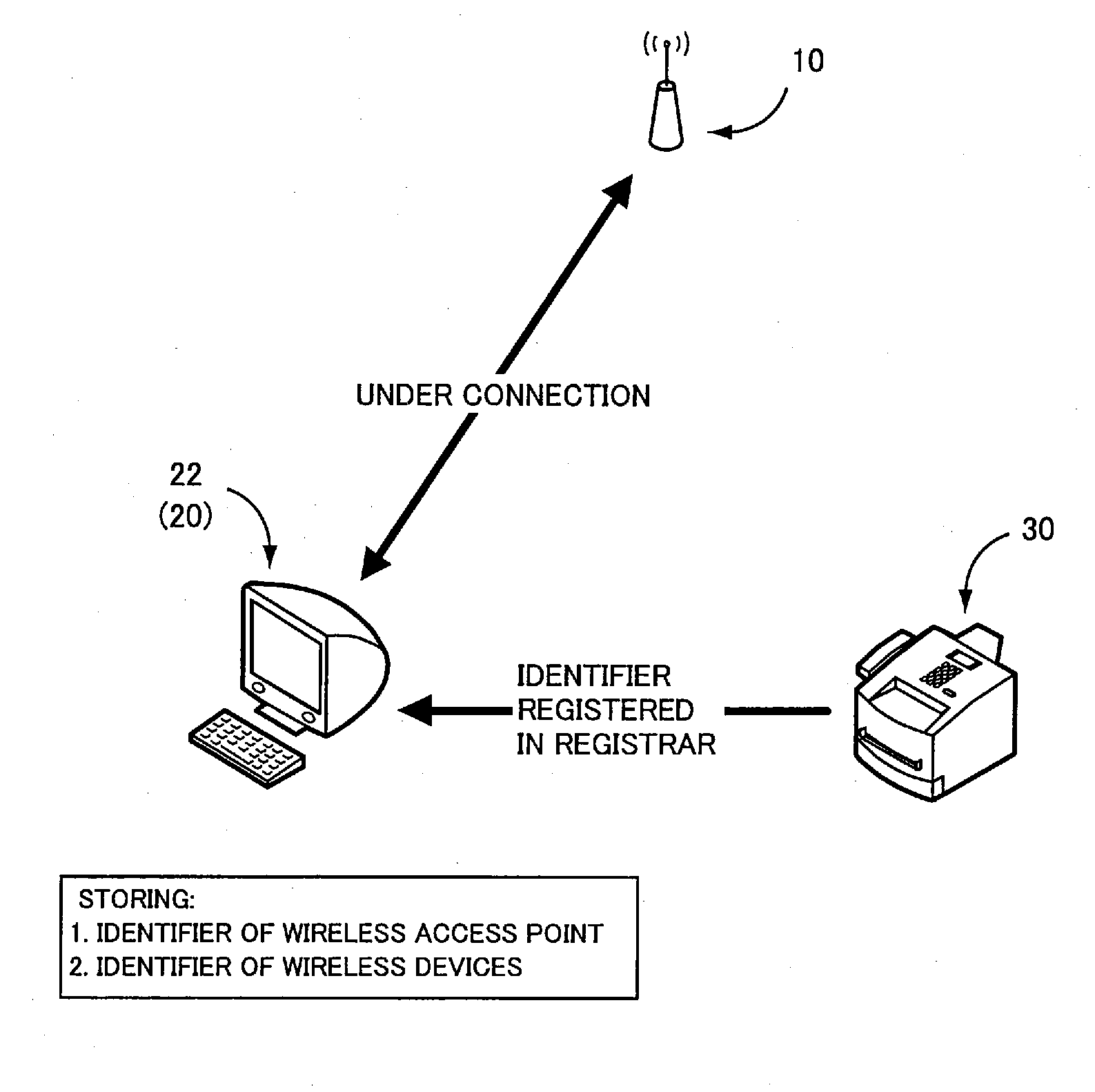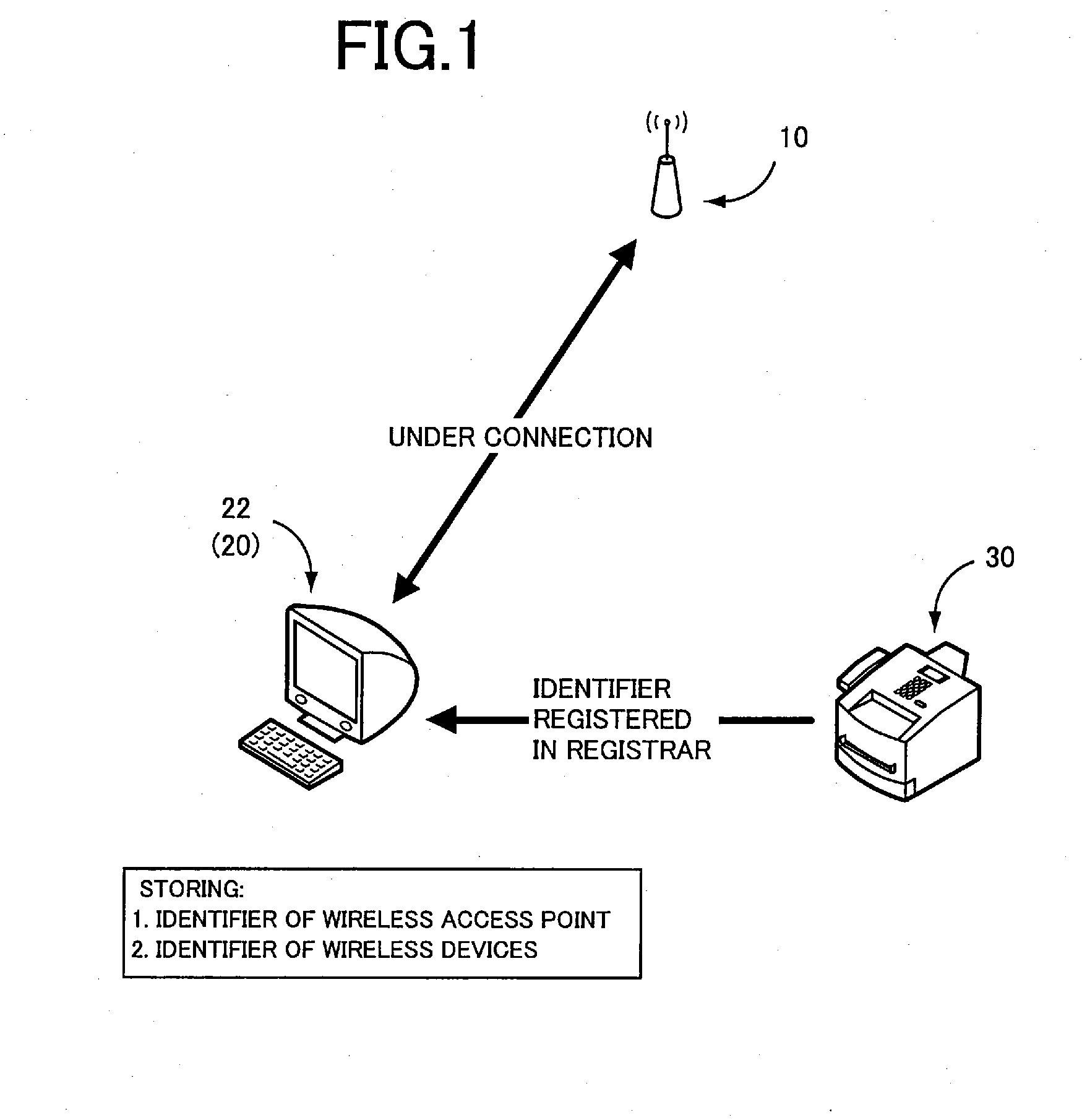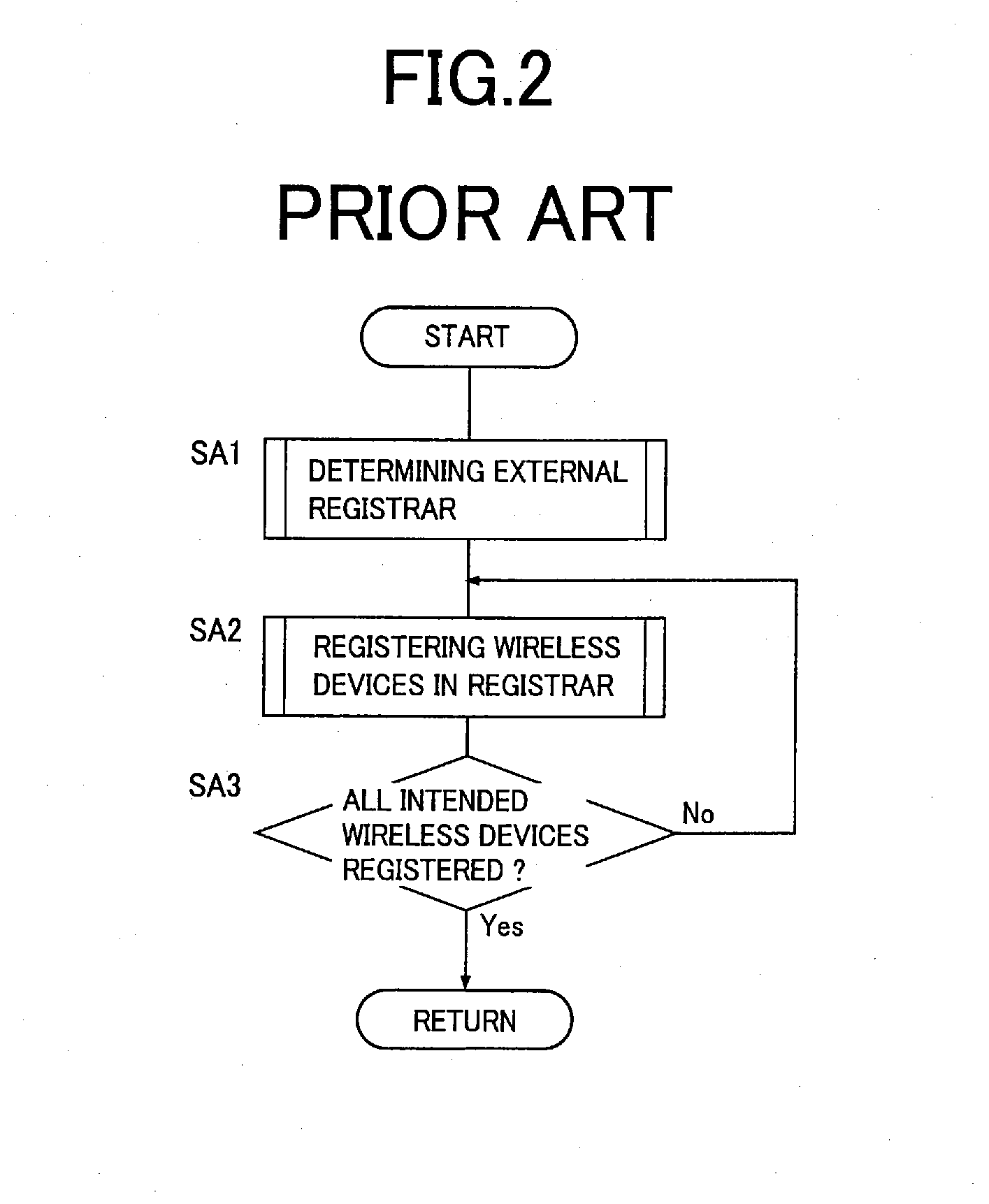[0011]The present invention was made in view of the background art described above. It is a first object to provide a
wireless network system which permits easy registration of identifiers of the wireless devices to enable the wireless devices to communicate with the access point. It is a second object to provide a wireless device the identifier of which can be easily registered in the registrar.
[0013]In the wireless network system constructed according to the first aspect of this invention described above, each wireless device includes the memory portion for storing the identifiers of the wireless devices, the data-supply requesting portion operable in the ad hoc mode to transmit at a predetermined time interval to the other wireless device the data-supply request packet requesting the other wireless device to transmit the identifier of the other wireless device stored in the memory portion of the other wireless device, the request replying portion operated in response to the data-supply-request packet received from the other wireless device, to transmit to the other wireless device the data-supply-request reply packet including the own identifier, the reply-data receiving portion operable to receive the data-supply-request reply packet transmitted from the other wireless device, and the identifier retrieving portion operable to retrieve the identifier from the data-supply-request reply packet received by the reply-data receiving portion, and store the retrieved identifier in the memory portion. Each wireless device further includes the registrar registering portion operable after the wireless device is set up as the registrar by the register setup portion of the access point, to register the other wireless device the identifier of which is stored in the memory portion, as the wireless device which is permitted to effect wireless communication with the access point. Since the identifier of the other wireless device is retrieved by the identifier retrieving portion and stored in the memory portion, the user is not required to store the identifiers of the other wireless devices in the memory portion, so that the other wireless devices can be easily added to the wireless network system.
[0015]According to a first preferred form of the first aspect of the present invention, each of the wireless devices further includes a reply setup portion configured to selectively enable or disable the request replying portion to operate. In this form of the invention, the operation of the request replying portion is selectively permitted or inhibited by the reply setup portion. If the request replying portion is disabled by the reply setup portion, that is, if the operation of the request replying portion is inhibited, the data-supply-request reply packet is not transmitted from the request replying portion in response to the data-supply request packet received from the other wireless device, so that the own identifier stored in its memory portion is not transmitted to the other wireless device. Thus, the reply setup portion makes it possible to prevent the unintended wireless devices from joining the wireless network system.
[0018]The wireless device constructed according to the second aspect of this invention described above is capable of wireless communication directly with another wireless device in the ad hoc mode without communication with the access point. In the present wireless device, the memory portion is arranged to store identifiers of wireless devices, and the data-supply requesting portion is configured to be operable in the ad hoc mode to transmit at a predetermined time interval to above-indicated another wireless device the data-supply request packet requesting the above-indicated another wireless device to transmit the identifier of the above-indicated another wireless device stored in the memory portion of the above-indicated another wireless device. Further, the request replying portion is configured to be operated in response to the data-supply request packet received from the above-indicated another wireless device, to transmit to the above-indicated another wireless device a data-supply-request reply packet including an own identifier, and the reply-data receiving portion is configured to receive the data-supply-request reply packet transmitted from the above-indicated another wireless device. In addition, the identifier retrieving portion is configured to retrieve the identifier from the data-supply-request reply packet received by the reply-data receiving portion, and store the retrieved identifier in the memory portion, if the retrieved identifier has not already been stored in the memory portion, and the registrar registering portion is configured to be operable after the present wireless device is set up as the registrar by the registrar setup portion of the access point, to register the above-indicated another wireless device the identifier of which is stored in the memory portion, as the wireless device which is permitted to effect wireless communication with the access point. Since the identifier of another wireless device is retrieved by the identifier retrieving portion and stored in the memory portion, the user is not required to store the identifier of another wireless device in the memory portion, so that another wireless devices can be easily added to a wireless network system.
[0020]According to a first preferred form of the second aspect of the invention, the wireless device further comprises a reply setup portion configured to selectively enable or disable the request replying portion to operate. In this form of the invention, the operation of the request replying portion is selectively permitted or inhibited by the reply setup portion. If the request replying portion is disabled by the reply setup portions that is, if the operation of the request replying portion is inhibited, the data-supply-request reply packet is not transmitted from the request replying portion in response to the data-supply request packet received from the other wireless device, so that the own identifier stored in its memory portion is not transmitted to the other wireless device. Thus, the reply setup portion makes it possible to prevent the unintended wireless devices from joining the wireless network system.
 Login to View More
Login to View More  Login to View More
Login to View More 


